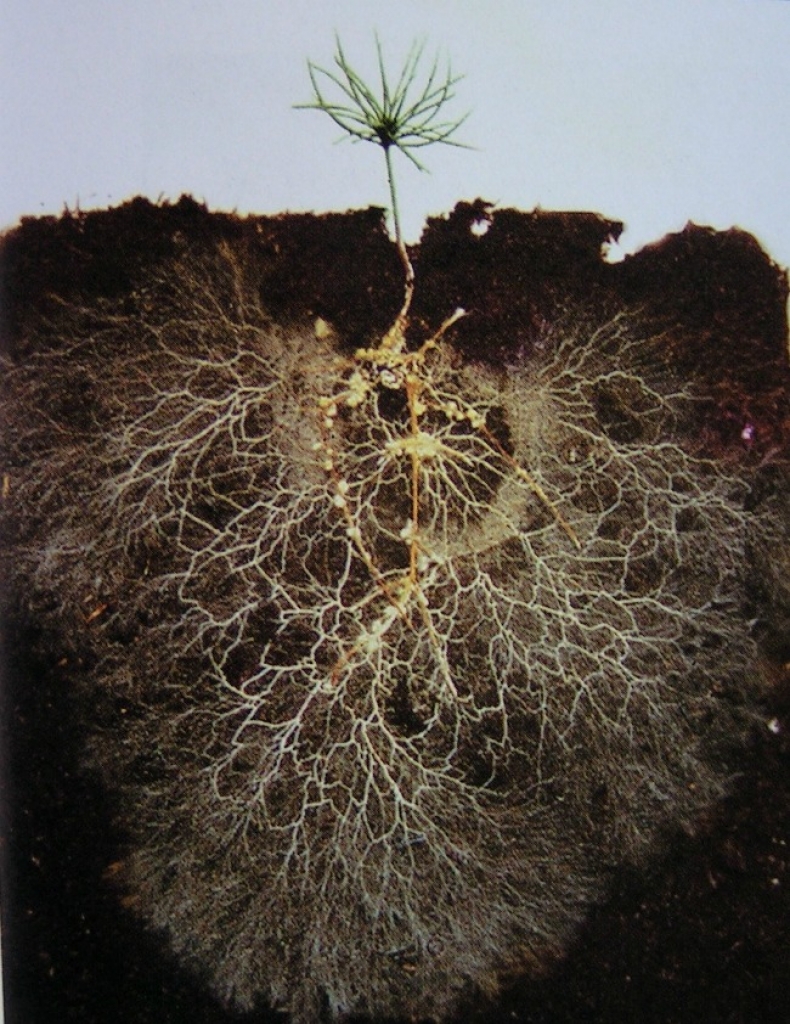Mycorrhizae
12/19/2020
Hello everyone!
It's finally winter break! Because of this, I will start writing more frequently.
As you read the title, you know that Mycorrhizae is the symbiosis between plants and fungi. But let's return to the origins of mycorrhizae. Mychorrizae was discovered by accident in 1880 in Prussia when King Wilhem I charged the University of Leipzig forestry professor A. B. Frank (Albert Bernhard Frank) to artificially grow truffles. Long story short, scientists at the time discovered that truffles aren't that far from trees, and somehow connect with other trees nearby. And then, mycorrhizae was discovered.
There are many different versions of mycorrhizal symbiosis, but today I'm going to talk about the roots.
How Mycorrhizae forms:
First, a plant calls out for any fungus nodes nearby. If there are any nearby, they'll start growing towards the plant's roots. When it reaches, the fungus mycelia (aka fungus roots) will communicate with the plant's roots in order to open up a pathway so they can start "trading"
What does Mycorrhizae trade with?:
The plant exchanges carbon and a little bit of glucose for rare nutrients like phosphorus because of their fine-tipped roots.
How does Mycorrhizae affect the plant?:
Mycorrhizae does many things, which include:
- Increases plant to access to more nutrients and water from the soil
- Protects roots with a Chitin protective barrier made from the outside of roots
- Increases tolerance to drought and stress conditions
- Enhances flowering and stress conditions
- Reduces weed competition
This is honestly amazing and I was wondering why people in agriculture haven't done this before?
But there's more. The biggest superpower. Trees with mycorrhizae can communicate with others. Even going so far as to donating glucose and carbon to them. And there's more still more! Suzanne Simard, an ecologist discovered this by adding a traceable isotope of radioactive carbon into a tree with mycorrhizae, and that same isotope was discovered in other trees! There's a great TED Talk about this and I recommend that you watch it: https://www.youtube.com/watch?v=Un2yBgIAxYs
This led to the discovery of Hub trees aka Mother trees. They're the oldest of the group and has the most connections to other trees, including seedlings and younger trees. We can somewhat visualize this and it creates something that is called the Wood Wide Web. On top of that, Mother trees can actually recognize their offspring and give larger amounts of nutrients and carbon than other trees!
Using this knowledge, loggers can reduce the number of times they cut down mother trees, and increases forest regeneration rates, and helps younger trees reach adulthood. This completely changes our viewing of plants and trees as "dead" and "emotionless" beings. But complex organisms that aren't that different from us.

Comments
Post a Comment